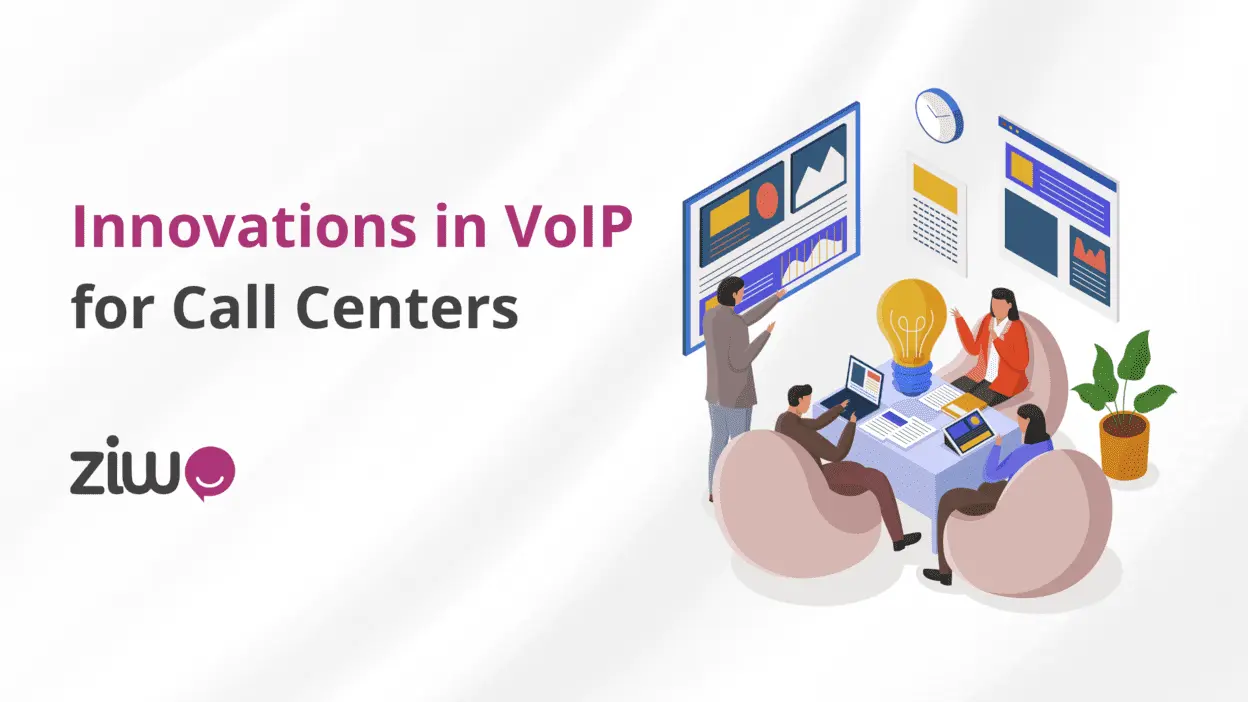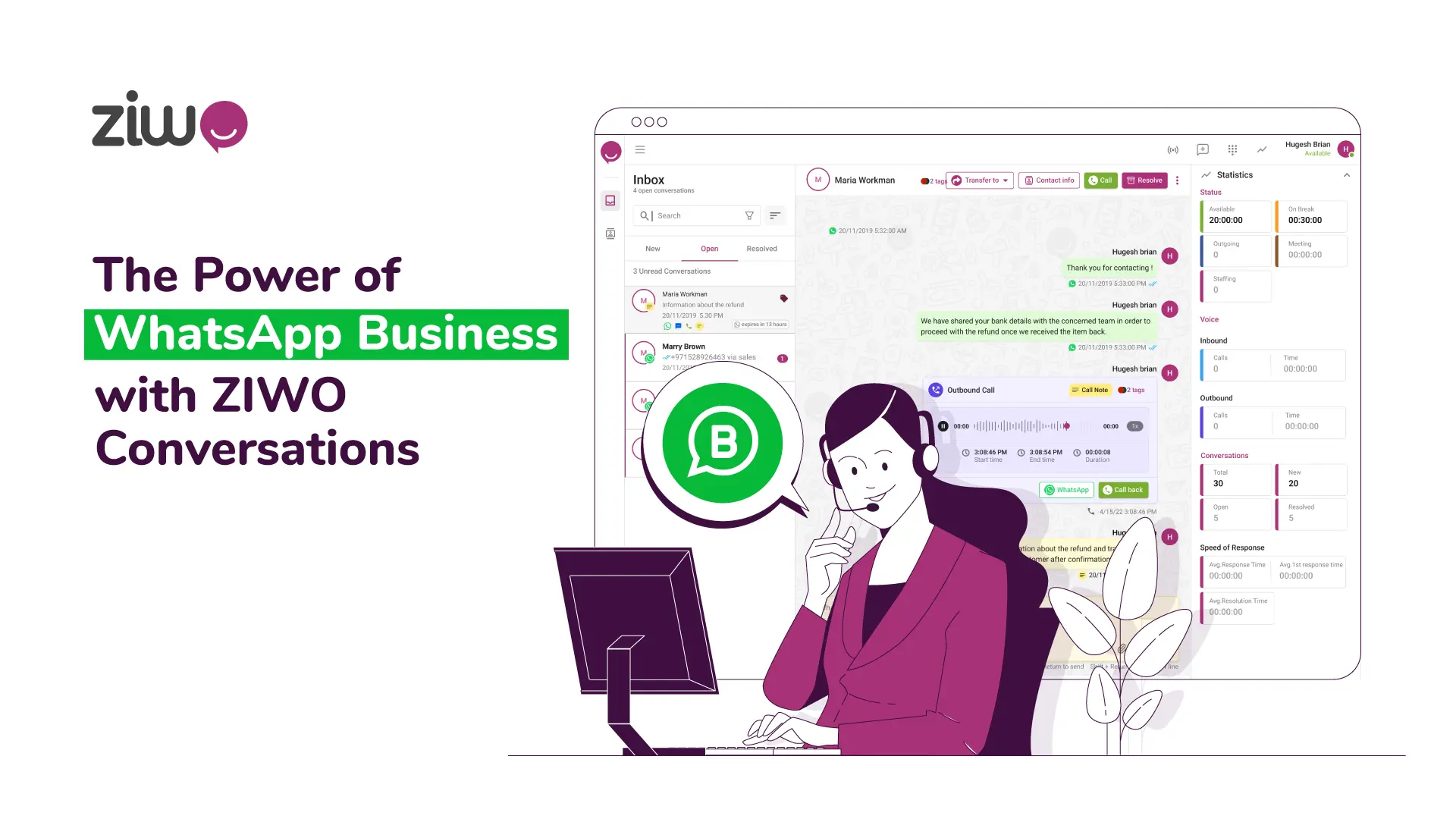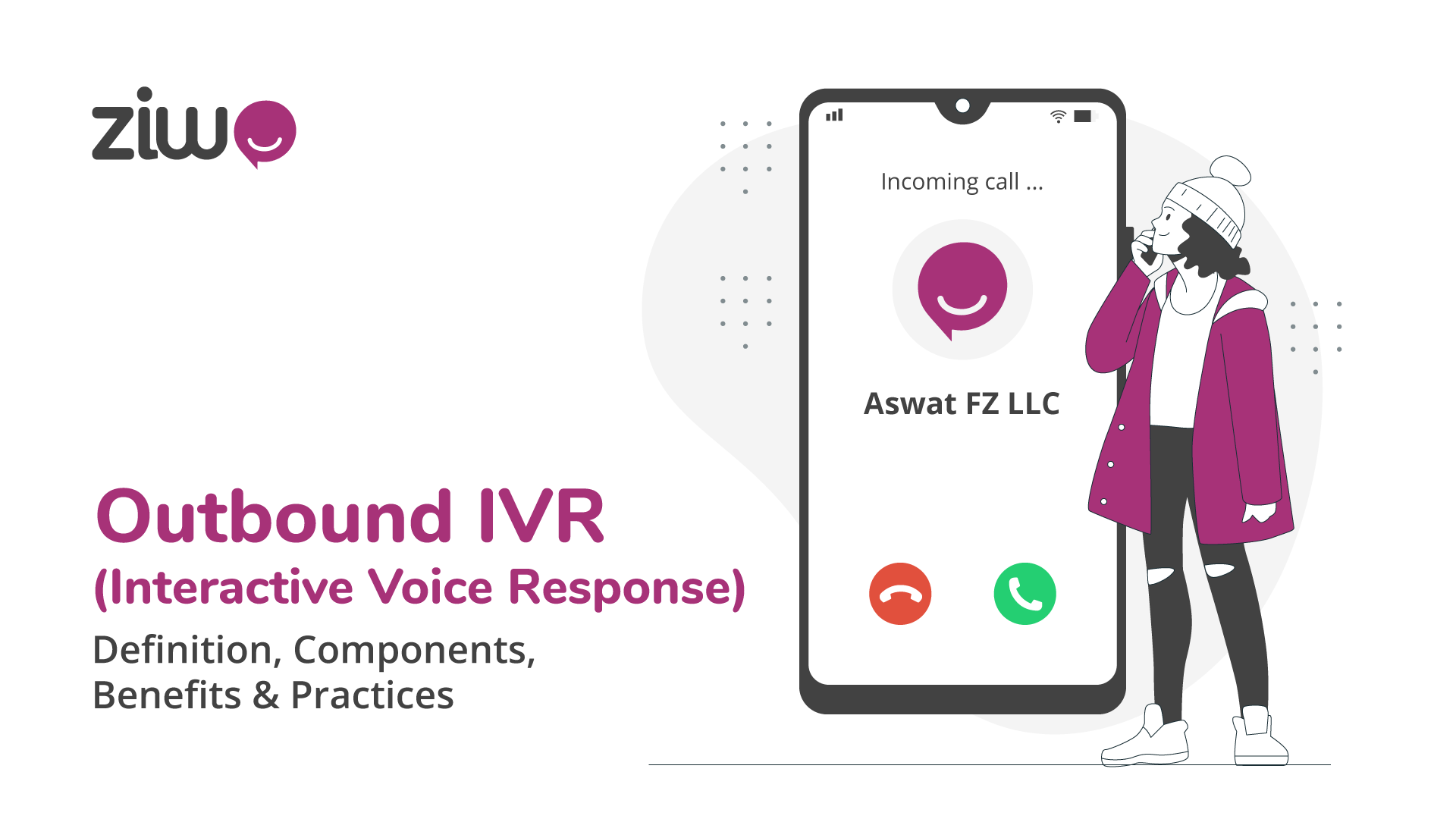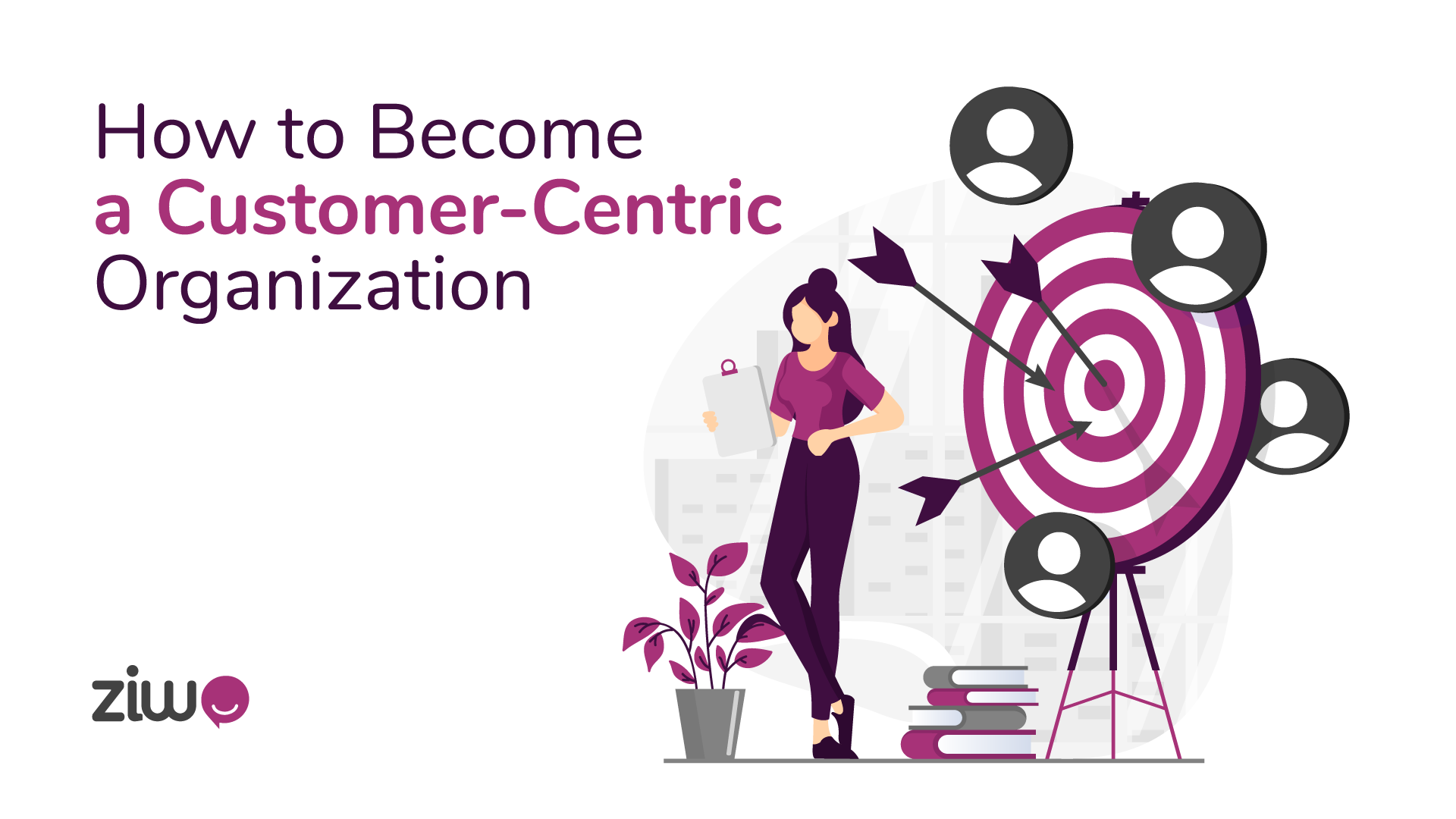
Quelles sont les innovations en matière de solutions VoIP pour les centres d'appel ?
Les progrès des solutions VoIPpour centres d'appels se poursuivent afin de répondre aux exigences modernes de la communication. Voici quelques-unes des principales innovations :
Routage avancé des appels : les capacités avancées des systèmes VoIP comprennent le routage basé sur les compétences, les systèmes IVR intelligents et les algorithmes de distribution automatique des appels (ACD) qui garantissent que les appels trouvent leur chemin vers les meilleurs agents en fonction des critères définis.
Intégration de la communication unifiée : les solutions VoIP sont de plus en plus intégrées à d'autres canaux de communication tels que l'e-mail, le chat et les plateformes de médias sociaux, de sorte qu'un agent peut gérer plusieurs canaux à partir d'une seule interface et que les clients peuvent bénéficier d'une expérience omnicanale totalement transparente.
Analyses et rapports en temps réel : Les plateformes VoIP d'aujourd'hui offrent des capacités d'analyse et de reporting avancées, permettant aux centres d'appels de connaître les volumes d'appels, les performances des agents, les mesures de satisfaction des clients, et plus encore en temps réel, facilitant ainsi la prise de décision basée sur les données et l'amélioration continue.
Fonctionnalités alimentées par l'IA : les solutions VoIP intègrent des technologies d'intelligence artificielle (IA) et d'apprentissage automatique pour optimiser les opérations des centres d'appels. Les fonctionnalités basées sur l'IA sont les assistants virtuels, l'analyse de la parole, l'analyse des sentiments et l'analyse prédictive visant à accélérer le traitement des appels, la gestion personnelle des clients et la résolution proactive des problèmes3.
Solutions basées sur le cloud : les solutions de VoIP basées sur le cloud sont plus demandées ces derniers temps, ce qui les rend évolutives, flexibles et rentables pour les centres d'appels. Les systèmes de VoIP basés sur le cloud offrent un accès facile à des fonctionnalités avancées, un déploiement rapide et une intégration en douceur dans l'écosystème informatique existant4.
Les innovations révolutionnent les processus des centres d'appels, permettant aux organisations de fournir un meilleur service à la clientèle, d'augmenter la productivité des agents et de développer l'entreprise dans le monde concurrentiel d'aujourd'hui.
Introduction à la VoIP dans le centre d'appel moderne
La Voix sur IP (Voice over Internet Protocol, VoIP) a révolutionné le mode de fonctionnement des centres d'appel, comme le montre la manière dont l'intégration de la VoIP a modifié la communication dans les centres d'appel. Grâce à l'utilisation d'Internet pour la communication vocale, la VoIP élimine le besoin de lignes téléphoniques physiques et de matériel, ce qui permet de réduire les coûts et d'accroître la flexibilité1.
La technologie permet aux agents de traiter les appels par le biais d'applications logicielles sur des ordinateurs ou des appareils mobiles, facilitant ainsi l'intégration des appels avec d'autres canaux de communication, et donnant ainsi aux centres d'appels le pouvoir de fournir un service client de haute qualité.
Comment l'IA redéfinit les capacités de la VoIP
L'IA (Intelligence Artificielle) remodèle les capacités de la VoIP (Voice over Internet Protocol) en introduisant des fonctionnalités avancées qui améliorent l'efficacité de la communication de diverses manières : L'IA (Intelligence Artificielle) redéfinit les capacités de la VoIP (Voice over Internet Protocol) en introduisant des fonctionnalités avancées qui améliorent l'efficacité des communications de diverses manières :
Routage intelligent des appels : les algorithmes d'IA traitent les données de l'appelant, notamment son historique et ses préférences, afin de diriger les appels vers l'agent ou le service le plus adapté. Cela permet de résoudre rapidement les problèmes et d'accroître la satisfaction des clients.
Assistants virtuels : les agents virtuels alimentés par l'IA, tels que les chatbots ou les assistants vocaux, sont capables de traiter les demandes et les tâches courantes des clients, laissant les agents humains travailler sur des questions plus complexes qui nécessitent une touche humaine. Ces agents virtuels peuvent offrir des réponses immédiates, une accessibilité toute la journée et des interactions personnalisées.
Reconnaissance de la parole et traitement du langage naturel (NLP) : les technologies d'IA permettent aux systèmes VoIP de transcrire et d'analyser instantanément les conversations parlées. Cela facilite la transcription des appels automobiles, l'analyse des sentiments et l'identification des informations clés sur les clients, ce qui permet de mieux comprendre leurs besoins et leurs préférences.
Analyse prédictive : Les algorithmes d'IA examinent les données historiques des appels et prédisent les volumes d'appels futurs, reconnaissent les tendances et anticipent le comportement des clients. Cela aidera les centres d'appels à fixer des niveaux de personnel optimaux, à mieux répartir les ressources et à résoudre les problèmes éventuels à l'avance.
Biométrie vocale : L'authentification biométrique vocale alimentée par l'IA améliore la sécurité en vérifiant précisément l'identité des appelants en fonction de leurs empreintes vocales distinctes. Cela permet d'éliminer l'ancien système de codes PIN et de mots de passe et d'offrir une authentification plus sûre et plus fluide.
Interactions personnalisées avec les clients : les algorithmes d'IA traitent les données des clients afin d'individualiser les expériences de communication. Cela implique la création de scripts d'appels dynamiques et la fourniture de suggestions de produits et de réponses adaptées aux préférences de chaque client.
D'une manière générale, l'IA transforme les fonctionnalités de la VoIP pour permettre des expériences de communication personnalisées plus intelligentes et plus productives, tant pour les clients que pour les agents des centres d'appel.
Routage et gestion des appels pilotés par l'IA
Le routage et la gestion des appels alimentés par l'IA rendent les procédures de traitement des appels plus efficaces en veillant à ce que les appels entrants soient acheminés vers le bon agent ou le bon département.
Ces systèmes utilisent des algorithmes sophistiqués pour évaluer de nombreux paramètres, notamment les données des appelants, les compétences des agents et le contexte des appels en temps réel.
Grâce à cette automatisation, l'IA améliore la productivité, réduit les temps de réponse pour les clients et garantit que les appels sont dirigés vers l'agent le plus qualifié pour les traiter. Il en résulte une meilleure satisfaction des clients et des processus de centre d'appels plus efficaces.
Analyse de la parole et des sentiments
L'IA dans l'analyse de la parole et l'analyse des sentiments permet de tirer des renseignements utiles des interactions avec les clients. L'analyse de la parole permet de transcrire et d'analyser automatiquement les enregistrements audio des appels, tandis que l'analyse des sentiments évalue le ton émotionnel véhiculé.
Ces instruments aident les centres d'appel à définir les tendances, les problèmes généraux et l'état de satisfaction des clients. Grâce à ces connaissances, les centres d'appel peuvent renforcer la formation des agents, mieux répondre aux réclamations des clients et améliorer la qualité du service en général.
L'intégration du cloud et son impact sur les solutions VoIP
L'intégration du cloud a un impact significatif sur les solutions VoIP, révolutionnant les capacités de communication de diverses manières : L'intégration du cloud a un impact significatif sur les solutions de VoIP, révolutionnant les capacités de communication de diverses manières :
Évolutivité : les solutions de VoIP basées sur le cloud présentent des fonctionnalités d'évolutivité qui permettent aux organisations d'adapter facilement leur infrastructure de communication en fonction du niveau de fluctuation de la demande. Grâce à l'intégration dans le cloud, les systèmes VoIP peuvent facilement évoluer à la hausse ou à la baisse en raison de l'évolution du volume d'appels ou de la croissance d'une organisation.
Flexibilité : Grâce à l'intégration dans le cloud, les solutions VoIP sont accessibles depuis n'importe quel endroit disposant d'une connexion internet, ce qui donne plus de liberté aux employés travaillant à distance et aux employés mobiles. Cela permet aux agents d'être connectés indépendamment de l'endroit où ils se trouvent et d'accroître la collaboration et l'efficacité.
Rentabilité : les solutions de VoIP basées sur le cloud permettent de s'affranchir des coûts excessifs du matériel et de la maintenance sur site. L'infrastructure cloud permet aux entreprises de réduire les coûts opérationnels initiaux et récurrents liés aux systèmes téléphoniques traditionnels.
Fonctionnalités améliorées : Basées sur l'intégration dans le cloud, les solutions VoIP permettent d'utiliser les fonctionnalités avancées du cloud : enregistrement automatique des appels, analyse en temps réel et intégration facile avec d'autres applications du cloud. Ces améliorations se traduisent par une productivité accrue, un meilleur service à la clientèle et une efficacité globale de la communication.
Fiabilité et redondance : les solutions de VoIP basées sur le cloud offrent de très hauts niveaux de fiabilité et de redondance avec des fonctionnalités de basculement et des fonctions de sauvegarde des données. Elles garantissent également un fonctionnement continu et réduisent les temps d'arrêt, même en cas de défaillance du matériel ou de panne du réseau.
En général, l'intégration du cloud améliore la qualité des solutions VoIP grâce à l'évolutivité, la flexibilité, la rentabilité, les fonctionnalités avancées et la fiabilité, ce qui constitue la meilleure solution pour l'entreprise moderne, qui souhaite optimiser l'ensemble de son infrastructure de communication.
Amélioration de l'évolutivité et de la flexibilité
L'intégration dans le cloud modernise l'évolutivité et la polyvalence des solutions VoIP, rendant ainsi les systèmes de communication des entreprises plus flexibles pour répondre aux besoins du marché.
Les services VoIP peuvent être augmentés ou réduits en fonction des besoins grâce à l'infrastructure basée sur le cloud, ce qui élimine les restrictions présentes dans les systèmes2 traditionnels basés sur le matériel. Cette flexibilité permet aux entreprises de répondre aux variations du volume d'appels, d'optimiser la distribution des ressources et de fonctionner correctement dans un environnement de bureau à domicile.
Les entreprises peuvent ainsi améliorer leur efficacité opérationnelle, réduire leurs coûts et améliorer les résultats pour leurs clients.
Faciliter le travail à distance dans les centres d'appels
L'intégration du cloud permet le travail à distance dans les centres d'appels en offrant aux agents l'accès aux outils et systèmes de communication les plus vitaux en tout lieu disposant d'une connexion internet.
Cette flexibilité facilite également le travail à domicile ou dans d'autres lieux éloignés, ce qui réduit le besoin d'espace de bureau et permet d'élargir le vivier de talents, qui n'est pas limité par des contraintes géographiques.
Les solutions de VoIP dans le nuage sont dotées de fonctionnalités telles que le routage virtuel des appels et des outils de collaboration en temps réel, qui garantissent une communication et une collaboration fluides entre les agents distants. Par conséquent, les centres d'appels peuvent avoir une plus grande efficacité opérationnelle, améliorer les niveaux de personnel et fournir un service client uniforme, quel que soit l'endroit où se trouvent les agents.
Les avancées de la technologie VoIP en matière de sécurité
Les innovations en matière de sécurité dans la technologie VoIP ont considérablement amélioré la sécurité des communications et des informations. Ces avancées comprennent des normes de cryptage solides, des méthodes d'authentification avancées, l'intégration de pare-feu et de systèmes de détection d'intrusion, et la création de protocoles VoIP sécurisés tels que le protocole de transport sécurisé en temps réel (SRTP) et la sécurité de la couche de transport (TLS).
Ces contrôles protègent la confidentialité, l'intégrité et la disponibilité des communications vocales, réduisant ainsi les vulnérabilités liées aux accès non autorisés et aux menaces malveillantes. Les organisations peuvent donc compter sur la technologie VoIP pour offrir des canaux de communication sécurisés et fiables pour leurs opérations.
Techniques de cryptage et de prévention de la fraude
Les méthodes de cryptage et de prévention des fraudes sont cruciales pour la sécurité des communications VoIP. Le cryptage est le processus d'encodage des données vocales pendant la transmission afin qu'elles soient confidentielles, sûres et protégées contre tout accès non autorisé. Les appels VoIP sont souvent protégés contre l'interception par des normes de cryptage populaires telles que Advanced Encryption Standard (AES) et Rivest-Shamir-Adleman (RSA).
Les moyens de prévention de la fraude comprennent l'authentification des appels, la surveillance en temps réel, le contrôle d'accès et les algorithmes de détection de la fraude. Ces systèmes permettent de découvrir et de décourager des activités telles que l'acheminement non autorisé des appels et la fraude au péage.
Grâce à l'utilisation d'un cryptage fort et de mécanismes de prévention de la fraude, les systèmes VoIP renforcent la sécurité, protégeant les entreprises contre d'éventuelles attaques et préservant la qualité des communications vocales.
L'essor des solutions VoIP omnicanales
L'émergence des solutions VoIP omnicanales représente une avancée majeure dans les technologies de communication, car elles intègrent les capacités de la VoIP dans les approches de communication omnicanale.
Ces solutions permettent aux entreprises d'intégrer en douceur plusieurs canaux de communication tels que les appels vocaux, la messagerie, le courrier électronique, les médias sociaux et bien d'autres encore dans une seule et même plateforme5. La mise en œuvre de solutions VoIP omnicanales peut aider les entreprises à améliorer l'implication des clients, à promouvoir le travail d'équipe et à simplifier la communication entre les différents canaux.
Elles permettent aux entreprises d'offrir une expérience intégrée à leurs clients, quel que soit le moyen d'interaction choisi, ce qui accroît l'efficacité, la productivité et la satisfaction des clients.
Intégrer la VoIP au CRM et aux médias sociaux
L'intégration de la VoIP aux plateformes de CRM et de médias sociaux permet aux entreprises d'améliorer les processus de communication et l'interaction avec les clients.
Cette fusion permet aux agents de connaître les informations sur les clients et l'historique des interactions au sein de leur interface de communication, ce qui permet d'améliorer l'efficacité et l'individualisation des interactions avec les clients.
De plus, en proposant des alternatives aux appels vocaux sur les plateformes de médias sociaux, les entreprises peuvent offrir aux clients une expérience d'assistance facile et efficace, ce qui se traduira par une plus grande satisfaction et une plus grande fidélité.
Conclusion : L'avenir de la VoIP dans les centres d'appels
En résumé, l'avenir de la VoIP dans les centres d'appels est prometteur, car le développement constant et la créativité façonneront l'industrie des technologies de la communication. La VoIP évolue également en tant qu'instrument crucial pour l'amélioration du service à la clientèle, le renforcement de l'efficacité et la communication ininterrompue par le biais de différents canaux. La fusion de l'IA, du CRM, des médias sociaux et d'autres technologies avec la VoIP la rend plus efficace et les centres d'appels peuvent offrir des expériences omnicanales sur mesure aux clients.
En outre, l'évolutivité et la flexibilité des solutions VoIP permettent aux centres d'appels de s'adapter aux changements de l'entreprise et d'accueillir facilement un volume croissant de communications. Avec l'adoption généralisée du travail à distance, la tâche de la VoIP pour soutenir les équipes distribuées et faciliter la collaboration à distance ne fera que croître.
Néanmoins, la sécurité et la fiabilité des systèmes VoIP sont très importantes. Les centres d'appel doivent investir massivement dans des mesures de sécurité et être attentifs aux nouvelles menaces, afin de protéger les données des consommateurs et d'assurer la continuité des opérations.
D'une manière générale, la VoIP continuera à être un élément central des opérations des centres d'appel modernes, à mesure que la technologie progresse et que les besoins des clients évoluent, en développant l'efficacité, en améliorant l'expérience des clients et en faisant partie de la réussite globale de l'entreprise à l'avenir.
Références bibliographiques
1 - Technologies VoIP et opérations des centres d'appel :
¹ Middleton, C., & Longford, G. (2016). Internet et les télécommunications : The Transformation of Voice Services. MIT Press.
² Van Bommel, E., Ende, B., & Steenkamp, E. (2020). VoIP in the Modern Call Center : Efficacité et innovation. Springer.
2 - L'intelligence artificielle dans les centres d'appels :
³ Smith, A. (2019). Technologies des centres d'appels pilotées par l'IA : Améliorer l'interaction avec les clients et la productivité des agents. CRC Press.
3 - Cloud computing et évolutivité dans les centres d'appels :
⁴ Marston, S., Li, Z., Bandyopadhyay, S., Zhang, J., & Ghalsasi, A. (2011). Cloud Computing-The Business Perspective (L'informatique en nuage - la perspective des entreprises). Decision Support Systems, 51(1), 176-189.
4 - Communication omnicanale et intégration de la gestion de la relation client :
⁵ Payne, A., & Frow, P. (2005). A Strategic Framework for Customer Relationship Management (Cadre stratégique pour la gestion des relations avec les clients). Journal of Marketing, 69(4), 167-176.






